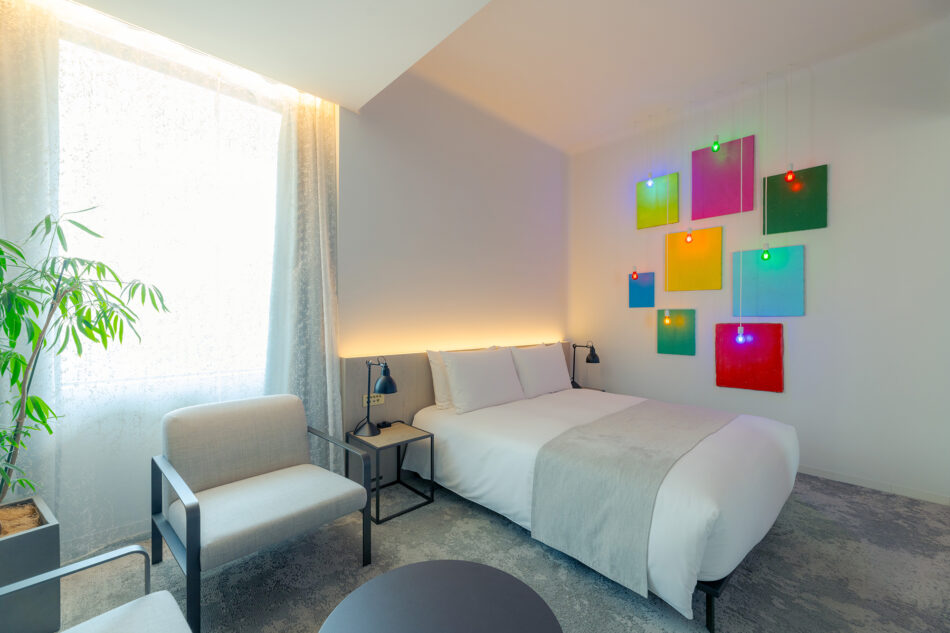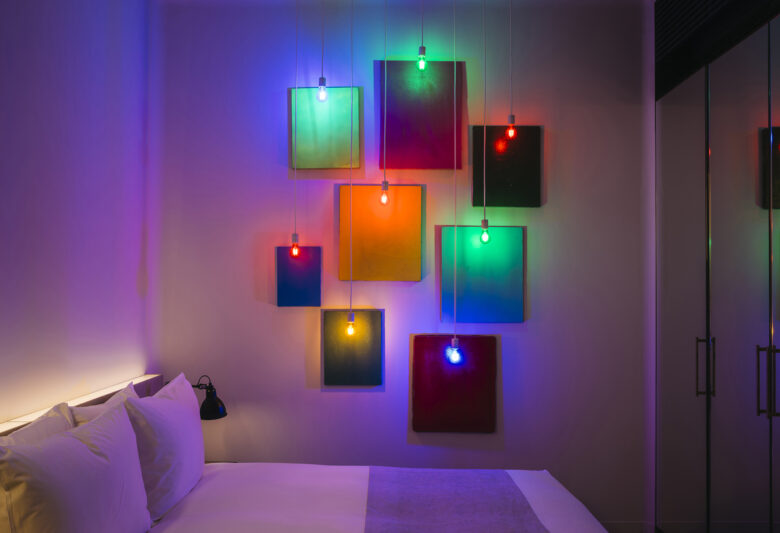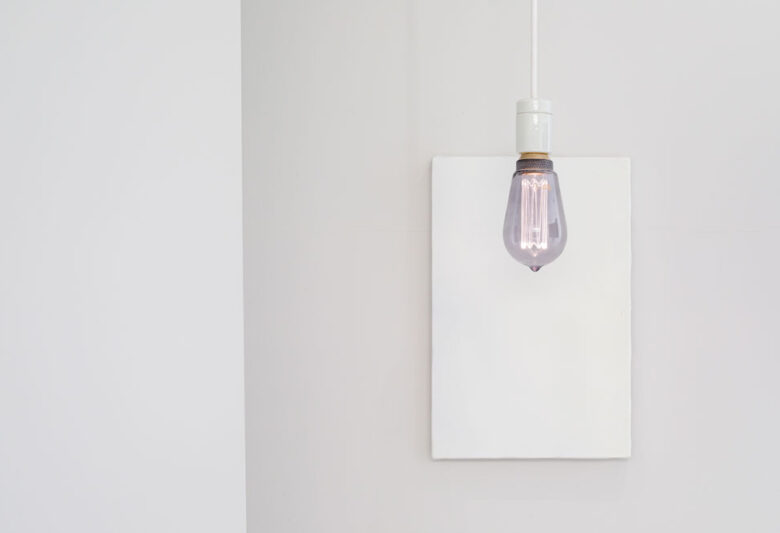ROOM 05 小野田賢三 / KENZO ONODA

- 目次
Nothing but flowers


1961年、群馬県前橋市生まれ。大阪芸術大学芸術計画学科音響専攻、中退。40代を過ぎてからアーティストとしての活動を始める。それ以前は、NTTのエンジニアとして長年働くなど、技術者として培った音響やコンピューターシステムの知識が作品の背景にある。主な参加グループ展に、2008年「PARKHAUS」(クンストハレデュッセルドルフ、ドイツ)、2009年「静寂と色彩 :月光のアンフラマンス」(DIC川村記念美術館、千葉)、2013年「カゼイロノハナ 未来への対話」(アーツ前橋、群馬)などがある。主な個展に、2016年「東京ホテル」(gallery coexist-tokyo、東京)、2020年「Here, There and Everywhere」(Dimensions Art Center、中国)などがある。作家自ら自身の作品を「ミニマリズム」と評すように、最小限の音や色彩の動きを利用して人間のさまざまな知覚を問い直す作品群は、ジョン・ケージの影響も見て取ることができる。
本作は、小野田の作品の中でも絵画の見方を改めて考えさせる作品である。カンヴァスは、西洋美術史において最もスタンダードな素材だ。8点のカンヴァスの中には、旧白井屋旅館を飾っていた作品もある。先々代の女将は前橋の文化の中心でもあった旧白井屋旅館を支え、文化人をもてなすと共に、自身も油絵を嗜み、ヨーロッパの風景などを写真やポストカードを元にして描いていた。小野田は、旅館からホテルへの改装にあたり、これらの油絵を再利用し、油彩で描かれたモチーフの上にリキテックスのスプレー塗料で新たな色面を描いた。カンヴァスに描かれるモチーフは抽象化し、蛍光灯の光の反射により曖昧な色彩を見せる。2010年から定期的にカンヴァスと電球を組み合わせた作品を発表しているが、本作は旧白井屋旅館から白井屋ホテルへの時代の変遷を具象画から抽象画への変遷として、小野田なりに解釈を盛り込んだ作品となった。
Kenzo Onoda was born in Maebashi, Gunma Prefecture, in 1961. He studied acoustics in the Art Planning Department of Osaka University of Arts, but withdrew before completion. Onoda began his career as an artist after entering his forties. Before that, he worked as an engineer at a Japanese telecom company NTT for many years,gaining technical knowledge of acoustics and computer systems that greatly influenced his later artworks.
His major group exhibitions include PARKHAUS (Kunsthalle, Düsseldorf, 2008), Stillness into Color: Inframince of Moonlight (Kawamura Memorial DIC Museum of Art, Chiba, 2009), and The Flower with the Color of Wind: Dialogues for the Future (Arts Maebashi, Gunma, 2013). His major solo exhibitions include Hotel Tokyo (gallery coexist-tokyo, 2016) and Here, There and Everywhere (Dimensions Art Center, China, 2020). Onoda describes his work as “minimalism”, and in its probing of human perceptions through the smallest possible movements of sound and colour it also shows the influence of John Cage.
Among Onoda’s oeuvre, this work in particular urges the viewer to reconsider how they look at paintings. Canvas is the most standard medium in the context of Western art history. Some of these eight canvases were hung on the walls of the former Shiroiya Ryokan. Two generations ago, the Shiroiya’s proprietress made the ryokan the epicentre of Maebashi’s cultural scene, hosting intellectuals and cultural figures. She was also an artist herself, painting European landscapes in oils from photographs and postcards.
In light of the ryokan’s renovation into a hotel, Onoda reused these oil paintings, painting new colour surfaces over the original images using Liquitex spray.The images originally painted on the canvas become more abstract and reveal ambiguous colours when reflecting fluorescent light. Onoda has presented work that combines canvas and light bulbs periodically since 2010, but with these he offers an interpretation of the passage of time from the former Shiroiya Ryokan to the current Shiroiya Hotel, represented in the transition from figurative to abstract painting.

